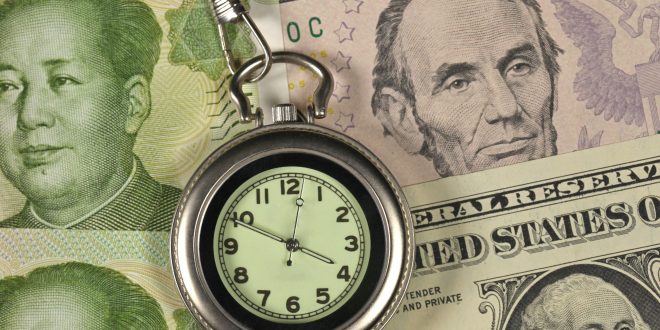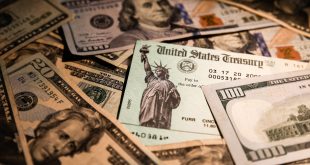Markets are showing increased activity in M&A deals, as recent data suggested that the total value of global merger and acquisition (M&A) deals so far this year has already exceeded that of last year, amounting to $3.6 trillion year-to-date.
A large chunk of this volume took place in the United States, where $2.14 trillion worth of M&A deals were announced this year, followed by Europe and Asia with $657 billion and $620 billion, respectively.
Record-breaking deals have led to the surge in M&A activity in 2021, supported by low-interest rates, support and stimulus measurements, and a positive performance by stock markets. Moreover, the number of deals increased by 24%, reaching 35,128 year-to-date.
But investors are anticipating the Federal Reserve policy adjustments sooner than later, with recent remarks by the central bank officials pointing to tapering talks on the horizon.
Kansas City Fed President Esther George and Dallas Fed President Robert Kaplan were the latest to call for ending the bond-buying program, with the recovery underway. Kaplan said that a decision on tapering is needed in the next Federal Open Market Committee (FOMC) meeting in September before coming into effect in October. Similarly, Atlanta Fed President Raphael Bostic thinks the Fed should begin tapering the massive asset purchases following two consecutive months of strong job creation. He believes moving from the current accommodative stance to a more normal policy should be faster than previously thought. On the other hand, Fed Governor Christopher Waller said last Thursday that economic recovery is progressing with the labor market showing improvement signs, which could lead to scaling back the accommodative monetary policy soon.
More signs are pointing to the possible policy normalization, as U.S. home prices increased during the second quarter of the year, amid higher demand and a limited supply of available homes. Data by the National Association of Realtors showed on Thursday that the median sales price for single-family existing homes increased in 94% of metropolitan areas across the United States by more than 10% on an annual basis. The median home price rose by 22.9% in Q2 to $357,900, hitting a new record high.
And more signs are pointing to the rising inflationary pressures, after the U.S. Producer Price Index (PPI) rose 7.8% on a yearly basis in July, beating market expectations.
In other central bank news, Mexico increased its key rate to 4.5% and Turkey maintained the main interest rate at 19%.
Concerns over the spread of the coronavirus pandemic are increasing rapidly with doubts over the pace of economic recovery. U.S. consumer sentiment declined in the first half of August month, registering its biggest drop since the beginning of the coronavirus pandemic to its lowest level in 10 years, as the University of Michigan consumer sentiment index dropped to a preliminary reading of 70.2 in August, down from 81.2 in July.
More booster shots of vaccines are getting approval to ensure that more people are immunized against COVID-19.
US Dollar
The US dollar ended the week ending August 13th in a bearish trend after the prevailing optimism in financial markets in the wake of US jobs data with the Senate’s passage of the infrastructure spending bill. The US dollar index, which measures the strength of the greenback against a basket of major currencies, fell to 92.51 from last week’s close at 92.97. The index touched last week’s top at 93.17 versus a low at 90.50.
The Biden administration managed to pass two major pieces of legislation, after the Senate approved a $1 trillion infrastructure bill, followed by a $3.5 Trillion budget, with both pending the approval of the House of Representatives.
US stocks settled little changed on Friday and recorded the second consecutive week of gains, as the rise of Walt Disney shares boosted the Dow Jones Industrial Average and Standard & Poor’s 500 indices, but the S&P500 and Dow Jones indexes reached all-time highs at the close.
The greenback registered on Friday its worst daily drop against the Japanese Yen (JPY) in five weeks, extending weekly losses to 0.56%, as the USD/JPY pair finished at 109.61, and against the Euro (EUR), the USD fell by 0.28%, with the EUR/USD pair settling at 1.1797.
On the other hand, the USD managed to record a second consecutive, yet marginal, increase against the Sterling Pound (GBP), with the GBP/USD finishing the week down by 0.05% at 1.3866.
UK GDP data did not provide support for Sterling, with a growth rate of 4.8% coming in line with market forecasts but below the Bank of England’s (BoE) expectations of 5% for the second quarter. GDP data attracted investors’ attention with some expecting that growth probably apexed.
Despite strong signs of recovery, economic output remains below the level seen in the fourth quarter of 2019, prior to the coronavirus pandemic, by about 4.4%.
Wall Street
Walt Disney’s stock rose in one of the biggest payouts to both Dow Jones and S&P after its earnings beat market expectations, as its streaming services added more customers than expected and its pandemic-affected United States theme parks returned to profitability.
But the report from the University of Michigan dampened optimism after it showed that a preliminary reading that is the lowest level since 2011, indicating that the delta strain of the Coronavirus is affecting consumers.
The Dow Jones Industrial Average closed at a new record high of 35,515.38 points, rising by 0.9% for the week. The S&P 500 finished at 4,468.00 points, registering a weekly increase of 0.7%. Both the benchmark indices managed to hit new record highs for the third day in a row and hit intraday record highs on Friday.
Meanwhile, the tech-savvy Nasdaq Composite closed the week with a loss of 0.1%, as the increase in bond yields weighed on tech stocks. Treasury bond yields registered their biggest weekly increase in two months, with the benchmark 10-year U.S. Treasury bond yield reaching 1.297%, up from 1.28% by the end of the previous week, seeing its highest weekly increase since June 25. Moreover, the 30-year bond yield also reached 1.948%, seeing the biggest weekly increase since late May.
Europe
European shares climbed to new record highs on Friday, posting a fourth consecutive week of gains, amid optimism about a strong earnings season and a steady recovery from the economic slowdown caused by the pandemic.
The pan-European Stoxx 600 index rose 0.2% to an unprecedented level of 476.16 for the tenth consecutive session. The index has posted its longest winning streak since December 2006.
While the pace of gains slowed due to weak trading in the summer, the index recorded a nine-day streak of consecutive gains seven times in the past 15 years.
The German DAX rose above 16,000 points for the first time ever, while the French CAC 40 touched its highest level in nearly 21 years.
Data by the European Union’s official statistics office (Eurostat) showed that the Eurozone recorded a significant rise in trade surplus, with the growth of exports outpacing imports by 5% during July, to EUR 18.1 billion, up from EUR 7.5 billion in May. Eurozone exports registered EUR 209.9 billion, while imports amounted to EUR 191.8 billion.
Gold
The yellow metal, gold, witnessed sharp fluctuations during the early trading of last week, as gold declined in less than an hour from the opening of the week’s trading by 4.2% to touch 1680 levels, its lowest level since the end of last March.
But gold did not stay long at these levels and quickly succeeded and regained its strength to climb above $1700 levels again during the same session.
The results of US economic indicators came to give a boost to gold, as inflation continued at its highest levels for the second month in a row, recording 5.4%, the highest levels since 2008, in addition to the decline in the US consumer confidence index to 70.2 in the first half of August, recording the lowest Read since 2011.
Gold succeeded in taking advantage of the opportunity and continued to rise to end the week’s trading in the green zone at 1779 levels, recording gains close to 0.75%
The yellow metal has managed to register gains in six of the past eight weeks, with the USD fluctuations, but remains below its yearly high of $1,952.70, recorded on January 5.
Silver futures registered its second straight weekly decline, falling by 2.24% to $23.768 per ounce, while copper futures gained 0.96% for the week, closing at $4.3870 per pound, its highest settlement level since August 2.
Oil
Oil prices witnessed a state of fluctuations during last week’s trading, as Brent crude declined at the beginning of the week’s trading to touch levels of $67.62, its lowest level in about a month, and West Texas crude fell to touch levels of $65.23, its lowest level in about a month.
And the International Energy Agency said last Thursday that crude demand growth is set to rise at a slower pace over the rest of 2021 due to the increase in infections with the mutated strain Delta of the Coronavirus.
Oil prices regained their balance at the end of the week’s trading, to end the week with Brent crude above $70 levels, and Texas crude ending the week at $68 per barrel.
The Organization of Petroleum Exporting Countries (OPEC) August report showed that the growth in the global oil demand is estimated at six million barrels per day this year, maintaining the same expectations of July.
This year, oil demand is expected to recover to 96.6 million barrels a day, with OPEC seeing a recovery by 3.3 million barrels per day in 2022, with global demand exceeding 100 million barrels per day (bpd) in the second half of 2022. Average demand of 99.9 million bpd is seen for the year, and despite maintaining the same expectations, OPEC sees that the global economic conditions have already improved due to increased vaccinations and recovery from the coronavirus pandemic.
OPEC also expects an increase in supplies, with non-OPEC output seen growing by 270,000 bpd this year and by 840,000 bpd in 2022. The OPEC+ commitment to the current level of output cuts stood at 115%, despite OPEC members increasing production in July by about 640,000 bpd to 26.7 million. OPEC is gradually easing output cuts, and while Libya, Iran, and Venezuela are exempt from output restrictions, Iraq, Nigeria, Kuwait, and the UAE increased production last month, while Saudi Arabia is easing its voluntary cuts.
Meanwhile, the U.S. is asking OPEC to increase production, claiming that the global economic recovery requires higher output levels, especially amid an increase in fuel prices. According to the EIA, U.S. retail gasoline prices averaged $3.14 per gallon in July, its highest level since October 2014, amid relatively low gasoline inventories.
On the other hand, Goldman Sachs has lowered its forecast for China’s oil demand in the next two months, citing pandemic-related concerns.
Calendar
Consumer confidence in the US deteriorated sharply in August with the University of Michigan’s Consumer Sentiment Index dropping to 70.2 in August from 81.2 in July, missed the market expectation of 81.2.
The Current Conditions Index declined to 77.9 from 84.5 and the Consumer Expectations Index dropped to 65.2 from 79.
The Producer Price Index (PPI) in the US for final demand rose to 7.8% on a yearly basis in July from 7.3% in June, the data published by the US Bureau of Labor Statistics showed.
There were 375,000 initial claims for unemployment benefits in the US during the week ending August 7, the data published by the US Department of Labor showed. This reading followed the previous print of 387,000.
The German ZEW headline numbers for August showed that the Economic Sentiment Index dropped more than expected to 40.4 from 63.3 previous while missing estimates of 56.7.
Meanwhile, the Current Conditions sub-index slipped to 29.3. in August as against 21.9 recorded in the previous month and 30.0 expectations.
In uk, Manufacturing output arrived at 0.2% MoM in June versus 0.4% expectations and 0.1% printed in May while total industrial output came in at 0.7% vs. 0.3% expected and 0.6% prevoius.
The British economy rebounded 4.8% QoQ in the second quarter of 2021 when compared to a 1.6% contraction seen in Q1 and 4.8% expectations.
 Noor Trends News, Technical Analysis, Educational Tools and Recommendations
Noor Trends News, Technical Analysis, Educational Tools and Recommendations





